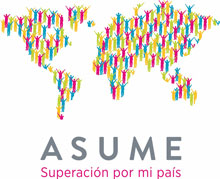To the rescue of the Mexican wolf
Currently, the Mexican wolf (Canis lupus baileyi), also known as Mexican gray wolf, is considered “probably extinct in the wild”, according to Official Mexican Standard (NOM) 059-SEMARNAT-2010 of environmental protection of native Mexican wild species of flora and fauna, because non individuals of this specimen were found living in the wild.
Today, more than 50 institutions in Mexico and the United States, through the Binational Program for the Recovery of the Mexican Wolf, work hard to protect this species. The Desert Museum (Museo del Desierto, Mude) is part of this binational project and participates successfully in the conservation and reproduction of this native carnivore of northern Mexico and southern United States. Their objective is achieving in a future its complete re-introduction into its habitat.
The Binational Program for the Recovery of the Mexican Wolf began with some individuals of this species, but very few with the lineage to try to achieve its recovery.
“After the massacres that occurred in the sixties and seventies, a total of seven Mexican wolves were recovered, who were wild and were captured to restart the breeding program. Obviously this makes the genetic variability of only seven individuals very small; so the crosses try to maintain as much as possible the genetic variability, which even though is reduced, is what we have,” explained Dr. Miguel Angel Armella Villalpando, Professor of the Department of Biology, Division of Biological Sciences and Health at the Autonomous Metropolitan University (UAM).
Year after year, the Mexico-United States Binational Meeting for the Recovery of the Mexican Wolf is organized with the participation of more than 30 institutions in the United States and 20 in Mexico. In this meeting, planning policies for the recovery of the wolf are developed. These policies include both captive breeding, which is essential to maintain genetic diversity, and populations that will be released in the United States and Mexico through a master plan.
The XXIII Binational Meeting of the Program for the Recovery of the Mexican Wolf was held last July in Cananea, Sonora, Mexico. In the meeting was reported that there are about 280 Mexican wolves in the country, 31 of them in wildlife, released through re-introduction programs in Mexican territory. In addition, 32 reproductive couples were authorized between Mexico and the United States to maintain the population.
Although it could be considered that the first objective of the program was achieved, saving the species from extinction and obtaining at least some populations living in freedom, they are still to a certain extent experimental populations. Therefore their behavior and development in freedom must be constantly monitored.
“At this moment, the situation of the Mexican wolf is at a critical point, there are already some specimens in a population of the wild, but we can still consider it to experimental […] We took a couple of steps toward recovery, but we cannot cry victory,” said researcher Armella Villalpando.
The Desert Museum, as part of its commitment to the region, developed a project called Living Desert in 2003. This project included exhibit living species that inhabit or inhabited the region of the Chihuahuan desert, particularly the semi-desert of Coahuila, considered a priority for their conservation in Mexico, such as: Mexican wolf, bighorn sheep, Mexican prairie dog and bison, among others. This year, a new litter of Mexican wolf was born in the Mude.

The conservation and breeding of this species has had important support from the World Wide Fund for Nature in Mexico (WWF) and Carlos Slim Foundation.
The WWF- Carlos Slim Foundation partnership works in six priority regions: Mexican Mesoamerican Arrecife, Chihuahuan Desert, Gulf of California, Monarch Butterfly area, Oaxaca and Chiapas. With local, national and international partners, it joins efforts, financial and human resources in the field of sustainable development and conservation of biodiversity. The partnership also works closely with federal and state government agencies to ensure that investments contribute to meeting national and regional goals. The partnership also works nationally on Climate Change.









